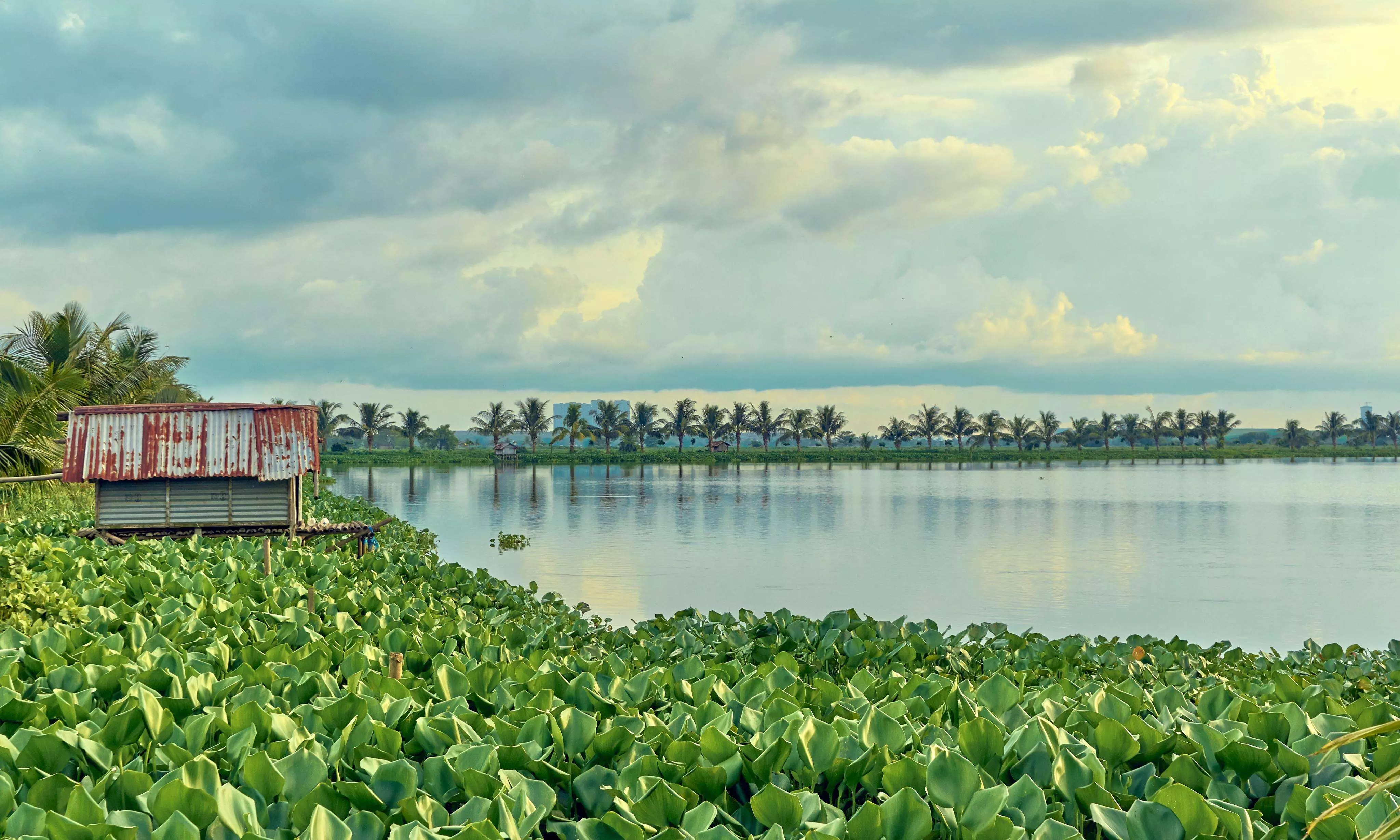Ramsar designated wetlands of Northeast India are under imminent threat

Source: Twitter
Guwahati, Feb 2: Wetlands contribute to the environment in a number of ways including regulating water quantity, groundwater recharge, protecting the ecosystem against floods and drought, acts as erosion control and sediment transport. It also provides as an important habitat for migratory birds and other species. However, threats like draining of wetland, construction works, climate change and dumping zones are contributing to the degradation of these natural habitats.
India is blessed with a total of 899 natural and man-made wetlands. Amongst these 49 sites have been recognized to be of "international importance" under the Ramsar Convention. In Northeast India, the three Ramsar sites are- Deepor Beel in Assam, Loktak Lake in Manipur and Rudrasagar in Tripura.
Deepor Beel
The fresh water lake of Deepor Beel in located on the outskirts of Guwahati city. The wetland derives its name from the 'lake of elephants' which used to be a channel of the Brahmaputra River. Considered as one of the largest beels in the Brahmaputra valley, the lake was declared a Ramsar site in August 2002.
Apart from providing livelihood opportunities to the locals in the form of fishing and farming, the lake is a natural habitat for many varieties of birds, 219 species of birds including more than 70 migratory species are reported in the beel area. Considering the richness of the bird varieties found in the beel, BirdLife International has declared Deepor Beel as an Important Bird Area (IBA) with high priority for conservation.
Natural and anthropogenic causes are some of the major threats that the lake is facing. This includes the proliferation of human settlements, expansion of roads and industries, threat from construction of broad-gauge railway line on the periphery of the beel that often possess a threat to elephant corridor thereby affecting the movement of the pachyderms.
Another major threat is posed by the dumping ground in the nearby area close to the water body. The situation worsens during the monsoon as garbage gets carried away into the water body, affecting residents and migratory birds and fish.
Waste water from different parts of the city and the adjoining areas is also contributing to liquid waste, which is affecting the health of the water body.
Loktak Lake
Located at Moirang in Manipur, the Loktak Lake is the largest freshwater lake in Northeast India and is famous for the phumdis (heterogeneous mass of vegetation) floating over it. Situated on this phumdi, Keibul Lamjao National Park is the only floating national park in the world. It is a Ramsar-designated wetland of international importance and home to the last wild population of the highly endangered brow-antlered, or Sangai deer which is the State animal along with a plethora of migratory birds and plant-life.
Development activities such as hydropower generation, irrigation and drinking water supply for economic expansion are the major stress factors and cause rapid conversion to other uses and their function in a wider economic sense.
Locals and environmentalists have often voiced their concern over the hydropower project which is gradually destroying the lake's ecosystem, greatly harming local livelihoods and threatening the habitat of animal species.
Degradation of catchment areas has occurred due to the construction of Ithai barrage. Deforestation and shifting cultivation in the catchment areas have accelerated the process of soil erosion resulting in the lake's shrinkage due to siltation. The annual silt flow into the lake is estimated to be 336,350 tonnes.
The nutrients carried through the catchment areas are discharged into the lake affecting its water quality, thus encouraging the growth of water hyacinth and phumdis. All these activities have a direct bearing on ecological stability of the lake.
The thickness of the phumdis has also decreased in the National Park, thereby threatening the survival of the Sangai deer.
Rudrasagar Lake
Also known as Twijilikma, the lake is located in Melaghar, in Sipaijala district of Tripura, about 52 kms south of Agartala. It was declared as a Ramsar site in 2007. The lake is situated near the Majestic Neermahal which is in the north-east bank of the lake.
The Rudrasagar Lake is a natural sedimentation reservoir, which receives flow from three perennial streams Noacherra, Durlavnaraya cherra and Kemtali cherra. After settling the sediment from the received flow, clear water discharges into the river Gumati through a connectivity channel Kachigang.
Rudrasagar is a potential Important bird area and attracts a large number of waterfowl in winter. Among the rarer species recorded are the endangered Baer's pochard and near-threatened ferruginous duck.
The main threats are increasing silt loads due to urbanisation, deforestation, expansion of agricultural land and intensive farming, and land conversion for population pressure.
Apart from these the other major threats include dumping of garbage, deposition of solid waste and storage of construction materials along the shoreline.
Destroying or degrading wetlands which are considered to be a rich repository of bio-diversity can lead to serious consequences, such as increased flooding, extinction of species, and decline in water quality. These consequences can be avoided by maintaining the valuable wetlands we still have and restoring lost or impaired wetlands where possible.
